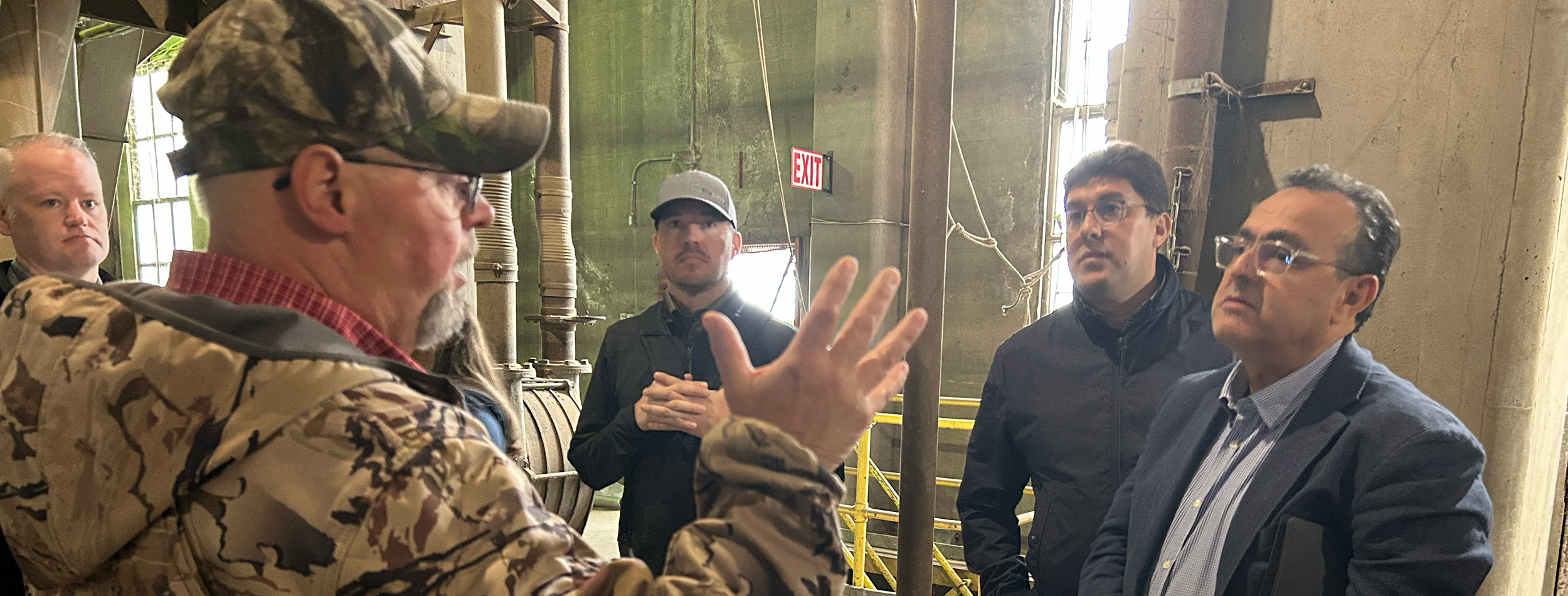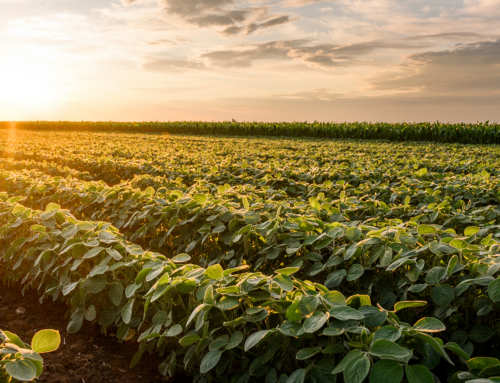
Soy on the Seaway: WSMB tours Port of Duluth-Superior
Share This
The Wisconsin Soybean Marketing Board (WSMB) visited with a Moroccan trade team this week on a tour of the Port of Duluth-Superior and the Hansen-Mueller Elevator, as part of a trade mission led by the U.S. Soybean Export Council (USSEC).
“You’re seeing history here,” General Manager Jeff Blaskowski said of Hansen-Mueller, which acquired the facility in 2022 after several years of vacancies. “This is a cool, old elevator.”
The facility can store 3.5 million bushels of grain and stands 195 feet above the bar. The site also supports nine legs and has a nearly 2,000-foot dock and on-dock rail service from BNSF Railway. The facility was built in the late 1800s – “You’re not going to see a lot of automation here,” Blaskowski said – and is capable of exporting small grains, plus soybeans and meal, from the United States and Canada to both domestic and international destinations.
Hansen-Mueller’s presence at the Port of Duluth-Superior offers potential to WSMB in its ongoing efforts to invest checkoff resources that support increasing soybean exports via the Great Lakes St. Lawrence Seaway System.
“We’re really excited to collaborate with Hansen-Mueller and the Port Authority on finding ways to move more soy through this system,” said Adam Kask, WSMB manager of strategic programs. “All the pieces are in place to make the Port of Duluth-Superior another viable shipping route for our farmers.”
Following the Hansen-Mueller visit, the delegation, which included buyers from Morocco’s feed milling industry, toured the Port of Duluth-Superior.
Though the port still ships about a million tons of grain annually – wheat and beet pulp pellets are some of the top exported commodities– iron ore is the most popular material exported from the Port of Duluth-Superior, which first opened for commercial shipping more than 150 years ago. The port is the continent’s furthest inland seaport and the highest-ranking port on the Great Lakes, attracting about 900 vessels each year. Shippers prefer shipping via Duluth-Superior party because traffic is uncongested; traffic on the Seaway could double and ships and barges would still flow freely.
“The great thing about the Great Lakes is we can offer a diversified supply chain for many of these shippers utilizing the coast,” said Kate Ferguson, director of trade and business development with the Duluth Seaway Port Authority. “So many companies want to diversify their risks, and we know the Great Lakes can be a reliable chain.”
Total maritime tonnage for the Port of Duluth-Superior finished the 2022 navigation season down 7.6% compared to 2021 and fell 7% against the five-season average. Additionally, grain shipments dipped by 20% in 2022, the port’s smallest grain throughput since 1890. The port hasn’t moved soybeans in about three years, and overall grain exports could drop again in 2023.
“We’re all trying to support agriculture throughout our region to get products to market,” Ferguson said.
Benabdeljelil Khalid, USSEC’s representative in Morocco, said his group was impressed by the reliability and magnitude o of the Port of Duluth.
“This is the first time we’ve gotten to do something like this,” he said. “They’re really trying to diversify here, and we see possibilities for shipping soy meal from (Duluth). It’s been a very positive experience.”
Kask said he hopes WSMB will participate in more trade visits during the 2023 growing season.
“These trips are an important step in maintaining and building relationships, which lead to growing markets,” he said. “They’re a great chance for us to meet face to face with buyers and explain the benefits of choosing high-quality soybeans from Wisconsin.”



